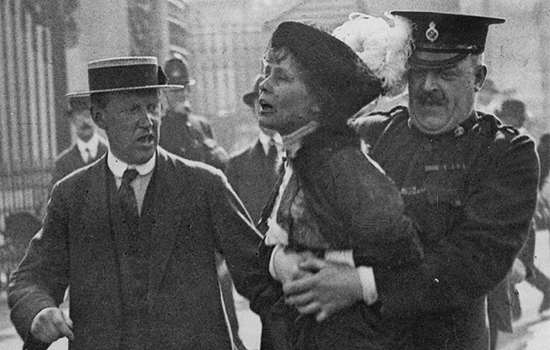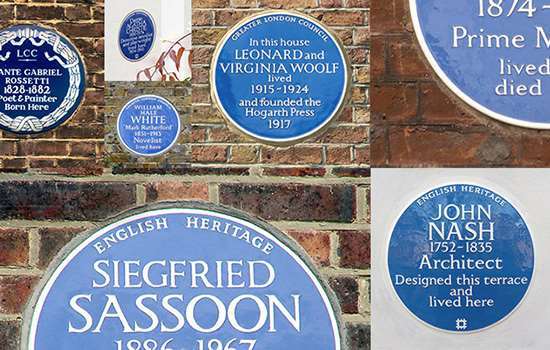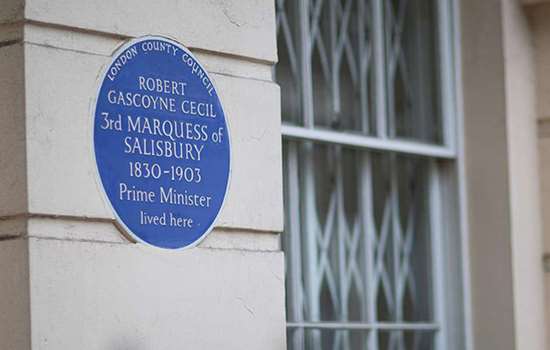BOWLLY, Al (1899-1941)
Plaque erected in 2013 by English Heritage at Charing Cross Mansions, 26 Charing Cross Road, London, WC2H 0DG, City of Westminster
All images © English Heritage
Profession
Singer
Category
Music and Dance
Inscription
AL BOWLLY 1899-1941 Singer lived here 1933-1934
Material
Ceramic
Born on 7 January 1899 in Mozambique, Albert Alick Bowlly was once described as "once described as 'Europe's Most Popular Crooner and Famous Radio and Record Star' and the voice behind much-loved songs such as 'Goodnight Sweetheart', first became interested in music when living in Johannesburg where he grew up. By his teens, he was 'music mad', running a barber's shop by day and spending his evenings singing and playing banjo and ukulele. In 1922, Bowlly joined Jimmy Clark's and Edgar Adeler's dance band organisation and a year later went on tour with Adeler's band before joining the Jimmy Lequime Orchestra in India, firstly as banjoist and later as vocalist. It was in Germany, in 1927, that Bowlly made his first recordings and established his reputation as a singer.
Following an invitation to join Fred Elizalde's band at the Savoy Hotel as vocalist and guitarist, described as 'the most advanced group playing in Britain at the time', Al Bowlly arrived in London in July 1928. Bowlly toured and recorded with Elizalde's band, while adding to his rather meagre income with freelance work. From late 1930, he became a regular vocalist with Ray Noble's New Mayfair Dance Orchestra, HMV's house band, and recorded more than 200 songs with the group by 1934, including 'Goodnight, Sweetheart' and 'The Very Thought of You', which helped him become increasingly recognised as a solo singer.
In January 1931, Bowlly met another bandleader, Roy Fox, Musical Director of the Decca Record Company. Over the next twenty months, Bowlly recorded more than 150 titles with Decca, and in spring 1931 became a member of Fox's new band, established at the Monseigneur Restaurant in the basement of 215-217 Piccadilly. With its popular house band, the Monseigneur soon became one of London's most fashionable attractions with shows broadcast on the BBC every Tuesday, and by the end of the year Bowlly had become one of Britain's top band singers. Known for his originality, Bowlly's good looks and charisma were admired by men and women alike. Lew Stone's new Monseigneur Dance Orchestra, which replaced Fox's band, had a major influence on Bowlly's career, encouraging him to perfect his technique and relieving him of guitar playing duties so he could concentrate on his singing. Bowlly's first record with Stone, 'Nightfall'/'Rain, Rain Go Away' (October 1932), was the first in a series of over a hundred set down in 1932-38. At the peak of his career in 1933 his signature tune was 'Some of These Days', though his rendition of 'Brother, Can You Spare a Dime?' became even more popular.
Between September 1934 and December 1936, Bowlly toured America with Ray Noble, and made a number of recordings, the best-known being 'My Melancholy Baby' (March 1935). It was a busy time. He was given his own NBC radio series, recorded (unused) footage for a film, The Big Broadcast of 1936 (1935), and met his idol, Bing Crosby. Despite his popularity and high earnings, Bowlly was unhappy and disappointed; frustrated at his inability to strike out as a solo star and homesick for London. During his absence, Bowlly had been surpassed in popularity by singers such as Sam Browne and Chick Henderson, and was forced to re-establish his reputation when he returned. His attempts to do so were interrupted by illness and he reluctantly broke up his new band, Al Bowlly's Radio City Rhythm Makers, when he lost his voice, and in August 1937 left England to have a throat operation in New York.
By January 1938, Bowlly had returned to London with a renewed energy and made a number of recordings, including a series with Lew Stone which is seen to equal or even surpass those of 1932-34. In all, he recorded just over 600 78rpm records between 1927 and 1941. He also made broadcasts with Stone's band, continuing to do so until 1941, and in 1938-39 made a series of high-quality recordings with the bandleader Geraldo, including 'Never Break a Promise'. However, times were changing - 'society' dance bands were becoming increasingly unfashionable and the outbreak of the Second World War meant there was less work around.
Despite continuing health worries, Bowlly remained productive. He formed an act with the singer and guitarist Jimmy Mesene in winter 1939/40 and it was with Mesene that Al made his last recordings, only two weeks before his death. On the morning of 17 April 1941 - a night of very heavy bombing in London's West End - Bowlly was one of three residents of Dukes Court killed by the blast of a landmine which fell in nearby Jermyn Street and blew in the block's windows. He was found lying next to his bed, having refused to retreat to the building's shelter. Described as a 'professional singer' on his death certificate, Bowlly was buried in a communal grave at Westminster City Council cemetery, Hanwell.
‘Britain's first pop star’
The plaque for Bowlly is on Charing Cross Mansions, 26 Charing Cross Road - his home at the pinnacle of his career, 1933-1934.
When the plaque was announced in 2013 Ray Pallett, Bowlly's biographer, said
Billed as the 'Ambassador of Song', Al Bowlly was the first singer to use the microphone and amplification to project his own personality and was hailed by the press as 'The all conquering Al Bowlly'. He was the first British popular singer to form a solo variety act, the first to be invited to have a solo spot on the BBC, and the first to be invited to work in America.
Howard Spencer, Blue Plaques historian, said:
Bowlly is widely regarded as the premier singer of the dance band era in Britain. At a time when most vocal work was uncredited, he developed a considerable public profile and did much to raise the status of singers in popular music, to the extent that he has been described as 'Britain's first pop star'. His voice has become synonymous with the dance band era of the 1930s, featuring regularly in films and on television, and Bowlly has been the subject of a number of biographies, multiple reissues on CD, a fan club (the Al Bowlly Circle, founded in 1968) and a touring musical, Melancholy Baby (1993). As Roy Hudd has written, Bowlly 'had a style that was his very own, instantly recognisable, and a way with a lyric that made the most ordinary song something special'.


